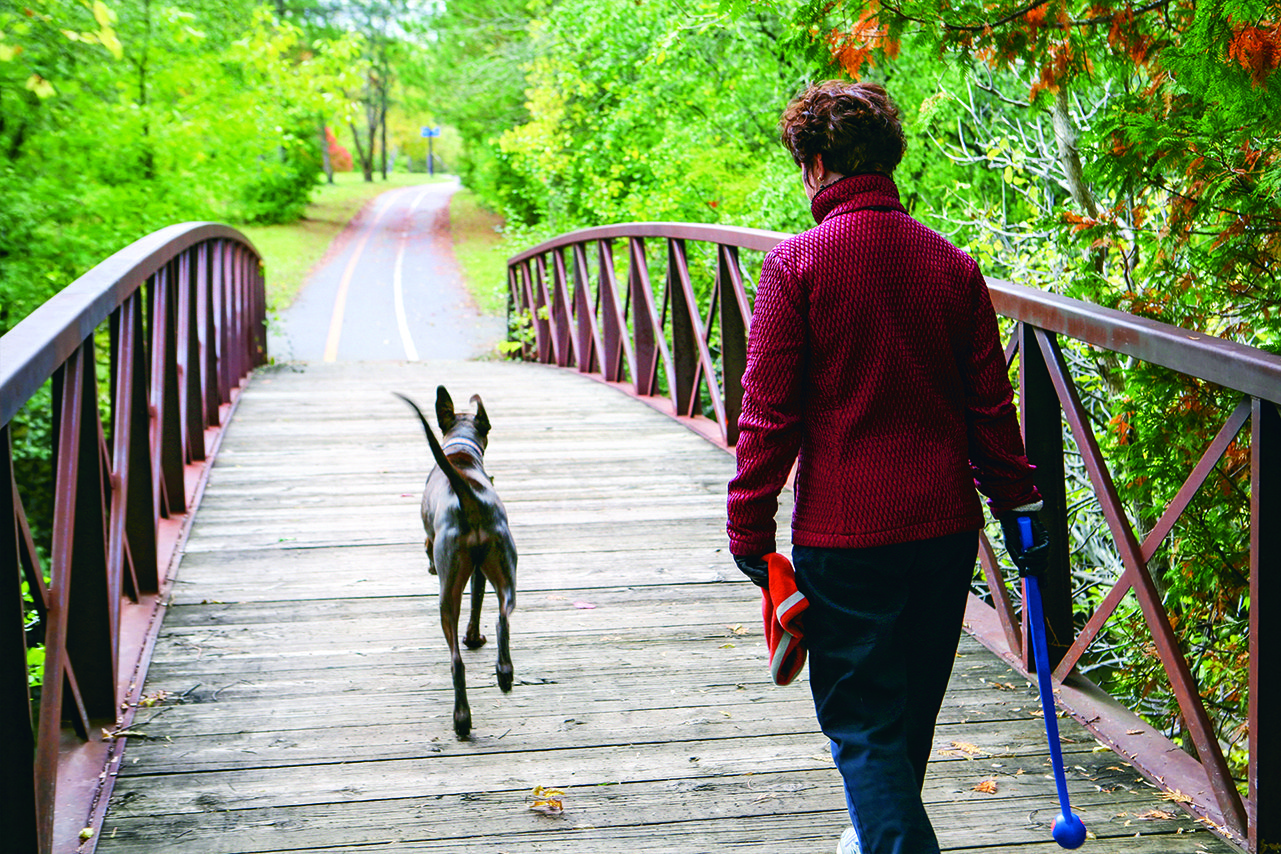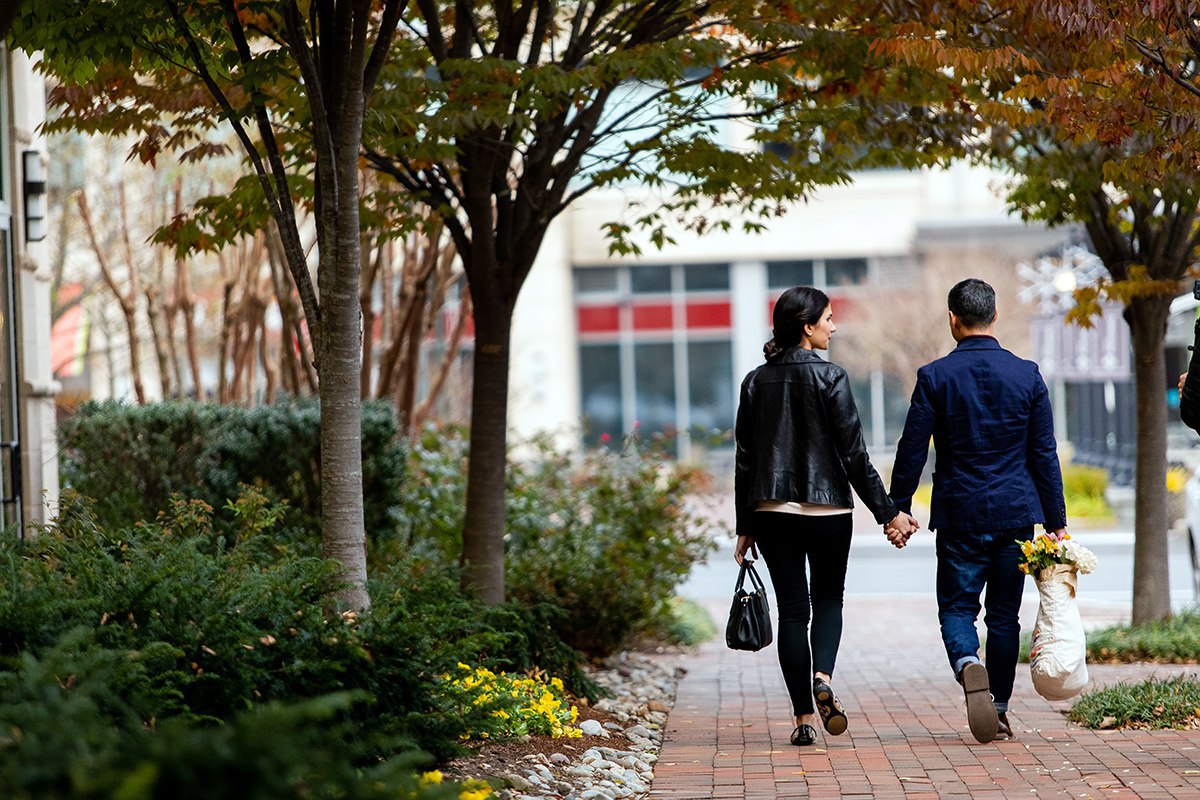Search for topics or resources
Enter your search below and hit enter or click the search icon.
Every February the American Heart Association (AHA) unites millions of Americans around a common goal for Heart Month — to think about making personal lifestyle changes that will boost health, lower the risk for heart disease and improve quality of life.
Increased physical activity, along with a healthy diet, is one of the best ways to improve health. And incorporating a regular walking routine is one of the easiest ways for increasing physical activity in your daily life.
Why Walking Makes Sense
Walking is the easiest form of exercise available. It requires no equipment, no memberships, no athletic skill and no structured activity…just a good pair supportive shoes and you’re set. And it’s proven to have the lowest drop out rate of any form of exercise, according to the AHA.
A new study published by the Office of Disease Prevention and Health Promotion shows physical activity like walking not only helps you loose weight and reduce the risk of coronary disease, it’s also good for the brain. It improves sleep, curbs stress, reduces the risk of dementia, depression and anxiety, and helps you perform daily tasks.
Discover EYA's walkable communities near you
How Much Should I Walk?
The federal Physical Activity Guidelines published in 2018 provide a good gauge on how much exercise – including walking – is appropriate.
For substantial health benefits, adults should engage in at least 150 minutes (2 hours and 30 minutes) to 300 minutes (5 hours) of moderate intensity physical activity a week. Walking at 2.5 mph meets this standard.
If you are not accustomed to physical activity, take it easy at first. Begin with several 10 to 15-minute walks a day around your neighborhood and gradually increase your time and distance each week.
For those able to amp it up, 75 minutes (1 hour and 15 minutes) to 150 minutes (2 hours and 30 minutes) of vigorous-intensity aerobic physical activity allows you to meet physical activity goals. Start at 3 to 4 mph, and if you’re breathing easy at that pace, increase your rate even more.
The AHA suggests a conversational pace test to determine if you’re working hard enough. If you can carry a complete conversation or sing a tune while maintaining your pace, you should try walking a little faster until these become more difficult.
GPS apps are a fantastic way to measure your walking speed and distance as you stroll. An article from verywell fit, rates the nine best wearable fitness trackers. Online calculators on your desktop or phone also allow you to track progress when you return home.
Pumping your arms with a light pair of weights as you walk is also a great idea for increasing physical activity. Muscle-strengthening exercise of moderate or greater intensity done at least two days a week is also among the recommended Physical Activity Guidelines for adults.

Make it Social
While some prefer to exercise on their own, others may prefer to make it social. Finding a friend in your community or even a group of neighbors is a great way to turn walking into a social activity.
The AHA offers a helpful article on how to become a walking club coordinator and start a group in your neighborhood. The guide includes tips on recruiting members, promoting the group and hosting events.
Online sites like Meetup can help you find community groups specific to your area that share an interest in walking and hiking. Local DC-area walking groups include:
Alexandria Walking & Hiking Group
Bethesda Women’s Walking Guild
Secrets of Nature Walking (Bethesda)
Walking Together (Gaithersburg)

Discover New Trails
Neighborhood streets with sidewalks and community paths provide the easiest access to safe walking for shorter distances. For a longer walks, there are many great woodland trails in parks and nature areas. Four of our nearby favorites are:
Cabin John Regional Park – West of Montgomery Row at Tuckerman Lane and Westlake Drive, Cabin John offers five miles of hiking trails in addition to ball fields, a volleyball court and an ice rink that’s even open in the summer.
Mount Vernon Biking Trail – An 18-mile trail from Washington, D.C. to Mount Vernon that cuts through Old Town, Alexandria at the half-way point near Robinson Landing.
Rock Creek Hiker-Biker Trail – A section of this 18.6-mile trail near Grosvenor Heights follows Beach Dr. between Rockville Pike and Connecticut Avenue. For longer distances, continue to Stoneybrook Drive and beyond. A lower section of the trail inside the Beltway lies east of the Brownstones at Chevy Chase Lake.
Rock Creek Regional Park – Near Westside at Shady Grove Metro, the park’s Westside Trail extends along Lake Needlewood and connects to the Rock Creek Hiker/Biker Trail continuing to points south.

Other Benefits of Walking
Not only is walking good for us, but it is also good for the environment. Incorporating walking into your daily commutes promotes sustainable living. By walking from your home to a Metrorail station or Metrobus stop and continuing to the office, you reduce the number of cars on the road, which saves fuel and promotes cleaner air by cutting Greenhouse Gas emissions.
And studies have shown that people who live in a walkable neighborhood are often more likely to use alternative forms of transit, drive less and walk more. In a walkable community, it's easier to walk more when you go about daily and weekly activities like shopping at neighborhood retailers, dining out or visiting friends.
And remember, every step counts!